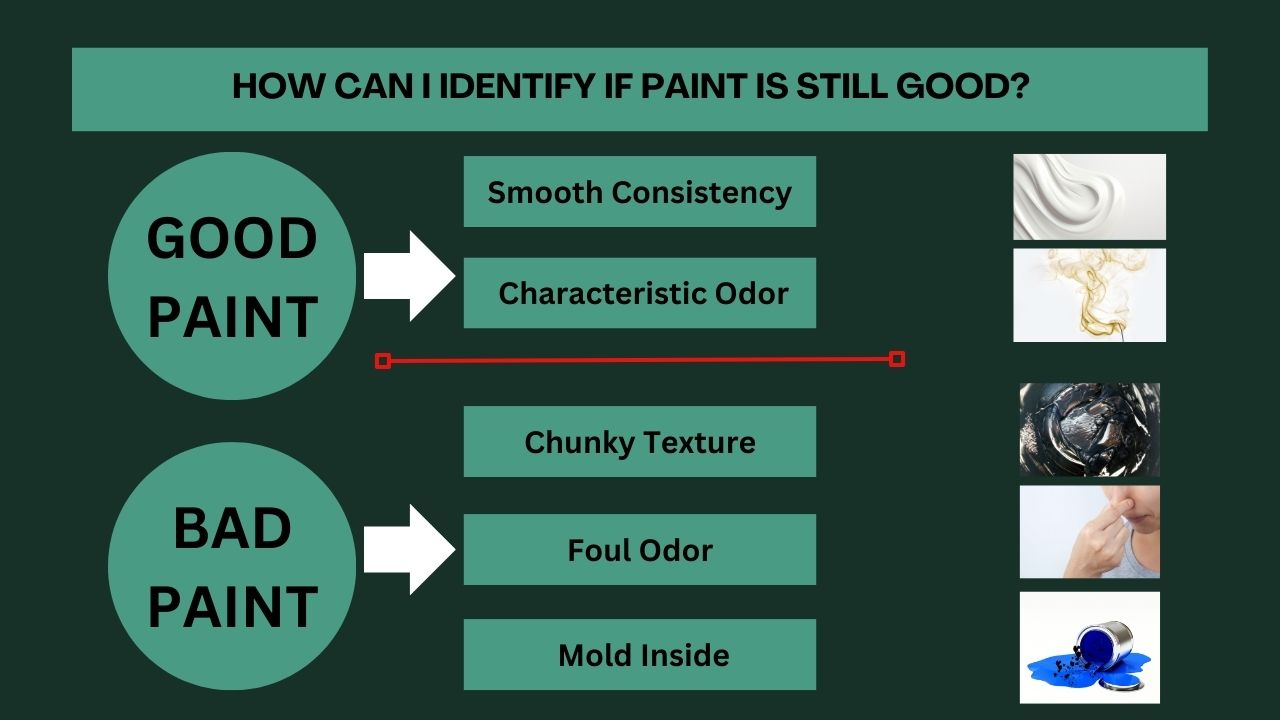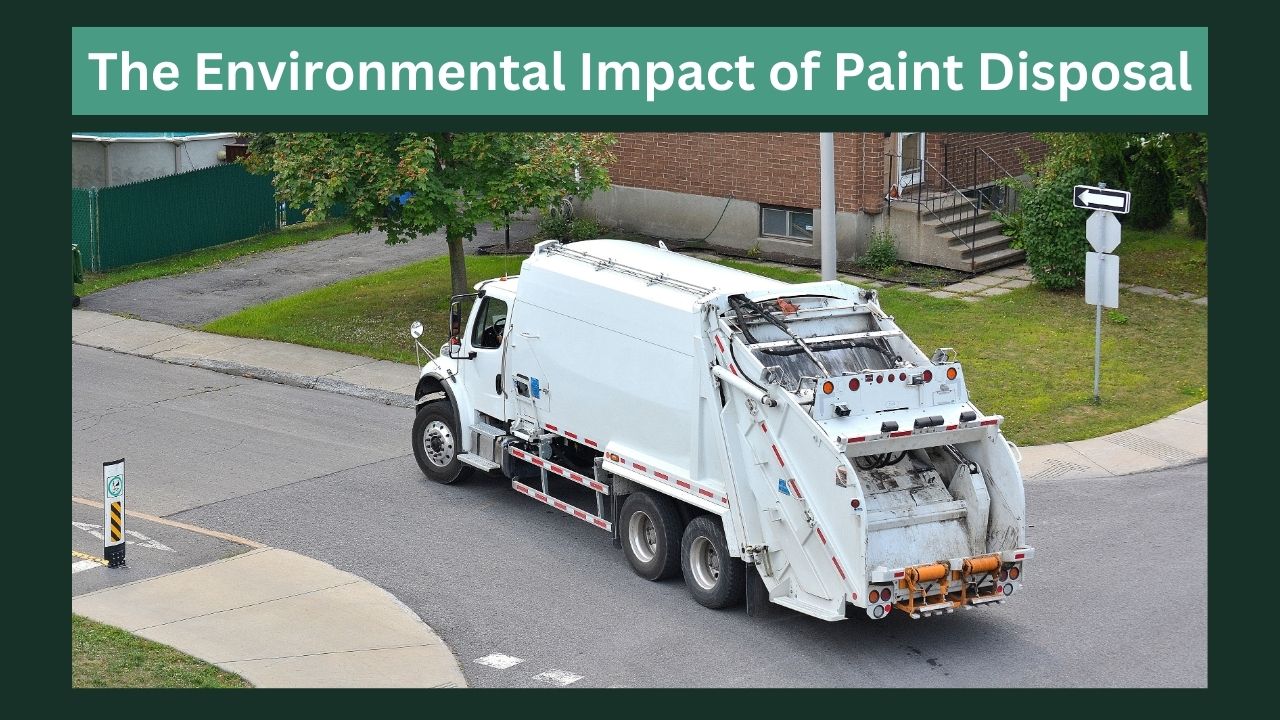What is the Lifespan of Opened Interior Paint?

Understanding the longevity of interior paint is crucial for homeowners looking to maintain their homes efficiently. Knowing how long interior paint lasts once opened and how to store and dispose of it properly can save you time, money, and environmental hassle.
Once opened, interior latex and acrylic paints typically last 2-3 years, while oil-based paints can last up to 5 years. Chalk paint lasts 1-3 years, and milk paint only lasts 1-2 weeks after mixing. Proper storage is crucial for maximizing paint lifespan.
You Might wanna learn What Is Interior Latex Paint?
This article delves into effective strategies for reusing stored paint, offering practical tips to extend its lifespan and maintain quality. Whether for touch-ups or larger projects, these insights will help you make the most of your leftover paint.

The Lifespan of Opened Interior Paint
Once a can of interior paint is opened, its shelf life can vary significantly depending on how well it is stored and the environment in which it is kept. Generally, most opened interior paints can last about 2 to 5 years if stored properly.
Factors Affecting Paint Longevity

1. Type of Paint
Different types of paint have different shelf lives. Latex and acrylic paints, which are water-based, generally have a shorter lifespan compared to oil-based paints. Here’s a quick breakdown:
- Latex or Acrylic Paint typically lasts 2-3 years after opening. They are Water-based and have strong adhesion and flexibility.
- Oil-based paint Can last up to 5 years if properly sealed and stored. These paints are durable, have a smooth finish, and are good for high-traffic areas.
- Chalk Paint – Has a lifespan of 1-3 years after opening. They give a matte finish, which is ideal for creating a vintage look.
- Milk Paint – Only lasts 1-2 weeks after being mixed.
2. Storage Conditions
Proper storage is key to extending the life of your paint. Based on my experience, ensuring an airtight seal and storing the paint in a cool, dry place can make a significant difference. Here are some tips:
- Airtight Sealing: Always ensure the lid is tightly sealed. Use a rubber mallet to tap the lid back into place gently. Adding a layer of plastic wrap under the lid can help create an extra seal.
- Temperature Control: Store the paint in a temperature-controlled environment. Extreme temperatures can cause paint to spoil faster. Ideally, keep the paint in a room that stays between 60-80°F.
How can I identify if paint is still good?
Before using stored paint, it’s essential to check if it is still good to use. Here are some signs that indicate whether your paint has gone bad or is still usable:

Signs of Good Paint
- Consistency: Good paint will have a smooth consistency after thorough mixing. If the paint has separated into layers (with solids settling at the bottom and liquids on top), it’s usually still okay to use after mixing well.
- Smell: Fresh paint will have a characteristic odor but should not smell rancid or sour.
Signs of Bad Paint
- Lumpy Texture: If the paint is lumpy or has a thick, chunky texture, it has likely gone bad.
- Foul Odor: Paint that smells sour or rancid has definitely expired and should not be used.
- Mold or Mildew: Any signs of mold or mildew inside the paint can mean it’s no longer safe to use.
From personal experience, thoroughly stirring old paint can sometimes revive it, provided it hasn’t been contaminated or exposed to extreme conditions.

How can I store paint to extend its lifespan?
Proper Sealing Techniques
Ensuring the paint can is properly sealed is crucial. Here’s how I do it:
- Clean the Can Rim: Wipe off any excess paint from the rim before sealing the paint can. This ensures a tight seal.
- Use Plastic Wrap: Before putting the lid back on, place a piece of plastic wrap over the opening. This helps create an additional barrier against air.
- Rubber Mallet: Use a rubber mallet to gently tap the lid back into place, ensuring it’s fully sealed without damaging the can.
Ideal Storage Environment
Paint should be stored in a location that maintains a stable, moderate temperature. Here’s what I recommend:
- Cool, Dry Place: Store paint in a cool, dry place away from direct sunlight. Avoid places like garages or sheds where temperatures can fluctuate widely.
- Elevation: Keep paint cans off the floor to avoid exposure to moisture and potential rusting of the can.
Are you wondering about the shelf life of interior house paint? Quora discusses how long you can use it and its freshness once opened. If you want more info, get insights and tips from the community!
Practical Tips for Reusing Stored Paint
When you’re ready to use stored paint for touch-ups or a new project, follow these steps to ensure the best results:
Inspecting and Preparing the Paint
- Visual Inspection: Open the can and inspect the paint for any signs of spoilage, such as a foul smell, mold, or a lumpy texture.
- Mixing: Thoroughly mix the paint using a paint stir stick or a mixing tool. If the paint has separated, mix until the color and consistency are uniform.
- Straining: If the paint has formed a skin or has lumps, use a paint strainer to remove any impurities.
Applying the Paint
When applying old paint, it’s important to test it first. Here’s a method I often use:
- Test Area: Apply the paint to a small, inconspicuous area to ensure the color and finish are satisfactory.
- Thin Coats: Apply the paint in thin, even coats. This helps to ensure a smooth finish and good adhesion.
Also Read: How To Paint Interior Window Frames?

Proper Disposal of Expired Paint
Disposing of expired paint responsibly is essential for both environmental and safety reasons. Here’s how to do it:
Latex Paint Disposal
- Drying Out: Allow the paint to dry out completely. You can do this by removing the lid or adding kitty litter or shredded paper to speed up drying.
- Trash Disposal: Once the paint is fully dried, it can be safely disposed of with your regular trash.
- Recycling: If latex paint recycling options are available in your area, consider them. Some recycling centers accept dried-out and solidified latex paint.
Oil-Based Paint Disposal
- Hazardous Waste: Oil-based paints are considered hazardous waste and should not be thrown away with regular trash.
- Disposal Facilities: Take oil-based paints to a hazardous waste disposal facility. Many communities offer designated drop-off sites for dangerous materials.
- Recycling Programs: Some paint stores or environmental organizations may have recycling programs for oil-based paints. Check for local options for responsibly disposing of unused or leftover paint.
It’s worth checking with local paint stores; some offer recycling programs or disposal services.
The Environmental Impact of Paint Disposal

Improper disposal of paint can have significant environmental impacts. Although latex paints are less harmful, they can still contribute to pollution if not disposed of correctly. Oil-based paints contain hazardous solvents that can contaminate soil and water supplies.
Green Initiatives and Responsible Usage
As someone who has worked on numerous painting projects, I always advocate for responsible paint usage and disposal. Here are a few green initiatives that can help:
- Accurate Purchasing: Use online calculators to estimate the exact amount of paint needed for a project to avoid overbuying.
- Donations: Donate leftover paint to community centers, schools, or neighbors.
- Recycling: Participate in local paint recycling programs if available.
Here’s another forum link on DoItYourself discussing the shelf life of paint. If you need more information beyond this article, feel free to explore the discussion further!
Conclusion
The lifespan of interior paints varies depending on their types: latex and acrylic paints typically last 2-3 years once opened, while oil-based paints can remain usable for up to 5 years. Chalk paint maintains its quality for 1-3 years, whereas milk paint lasts only 1-2 weeks after mixing. Proper sealing and storage practices are essential for extending the longevity of paint. Ensure cans are tightly sealed by cleaning the rim, using plastic wrap, and gently tapping the lid with a rubber mallet.
Let’s now address some frequently asked questions (FAQs) together. I’m here to provide clear answers and help simplify things for you. Feel free to ask anything!
FAQs
What should I do if I notice mold growth on the surface of open paint?
Is it safe to use paint that has separated into layers?
Can I add water or thinner to old paint to extend its lifespan?
How can I estimate how much paint to purchase to avoid excess leftovers?
Can you store opened paint cans in the refrigerator to extend their lifespan?
References
- https://www.quora.com/When-you-buy-a-can-of-interior-house-paint-for-how-long-can-you-use-it-does-it-stay-fresh-while-closed-Once-you-open-it
- https://www.reddit.com/r/paint/comments/w1da0a/how_long_does_paint_last/
- https://www.diychatroom.com/threads/when-store-mixes-paint-for-you-how-long-does-it-stay-mixed.663329/
- https://www.doityourself.com/forum/painting-staining-all-interior-exterior-surfaces/168291-there-shelf-life-paint.html
- https://www.city-data.com/forum/house/3245329-paint-expiration-date.html
